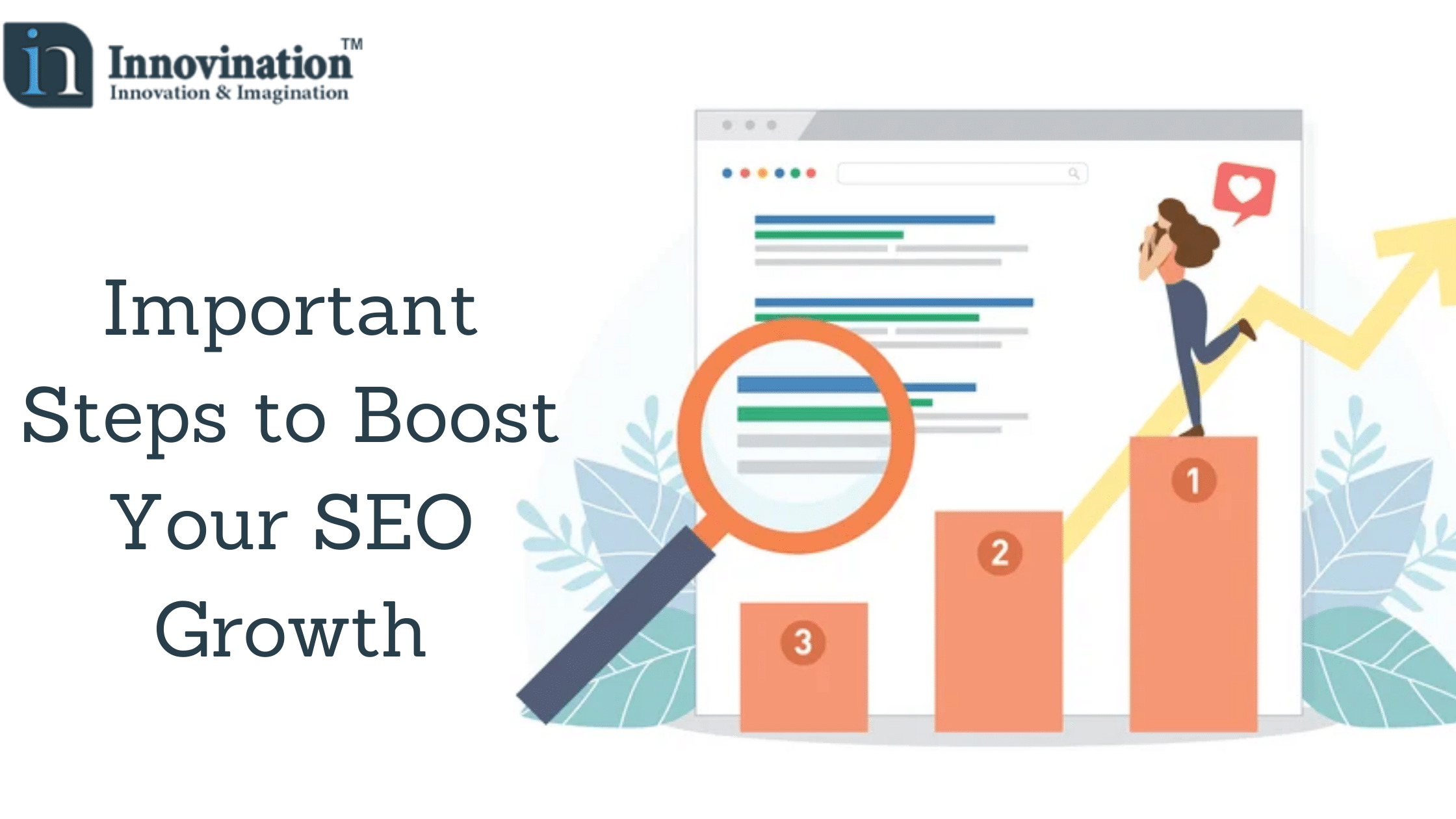3 Steps to Boost Your SEO Growth
Updated at: March 26, 2024


Website Audit
Website Audit is immensely necessary for every organization before optimizing their SEO. For this purpose, we use various kinds of tools to audit our websites for SEO. These include both free and paid tools. Some of them are as follows.
Paid Tools
● Ahrefs.com: This tool is an all-in-one solution for all kinds of needs that revolve around website SEO auditing. It can help in auditing the content of the site and provide a detailed analysis on the performance of the site including competitor analysis, keyword analysis, relevance, etc. These highly useful features make it an amazing paid tool that is worth every penny of it.
● Ubersuggest: Despite being a paid tool, this site allows for the extensive analysis of any website, especially issues regarding links that are associated with the site. This tool is also amazing for tracking the traffic of the website. This makes this site one of the most advantageous tools ever.
● SEMrush.com: This tool is one of the most widely used tools ever. Several individuals and organizations use it for tracking the performance of their websites. One of the prime advantages of using this tool is that it is great at providing recommendations regarding the SEO, advertising and marketing used by the site.
● Moz.com: This tool is a one-stop for all forms of SEO requirements. However, it is especially helpful for tracking data in real-time and performing competitor analysis. Regardless, it also has other features that are immensely beneficial for assessing the performance of a site.
Free Tools
● Google Analytics: This is one of the best free tools that can have several features. One of the key benefits of this tool is that it helps in understanding the performance of marketing and content of a website.
● Google Search Console: Google provides several searches and analytical tools that can be immensely helpful for organizations. Several features can point out critical errors and provide resolutions for the same. The correction of these issues can instantly make any site more Google-friendly than it was before.
● Seositecheckup.com: This tool is immensely helpful in checking the technical issues that may have been overlooked during the assessment of the website. The detailed portrayal of these issues can help improve the user experience and interface of the site.
What We See in Audit Report
The preparation of an audit report is not enough. The audit reports need to be well analyzed to point out the sectors that need improvement and changes. Given below are some sectors that are critically judged in an SEO audit report.
● Technical Error: If some technical issues are existing in the website, those can harm your SEO health score, it needs to be solved immediately to get a good SEO result.
● SEO Elements are Existing or Not: Several elements are necessary to be analyzed before conducting SEO optimization. Therefore, it is necessary to check if these elements are present or not and how well they are performing. Like Meta tags, interlinking, sitemap.xml file, Google analytics, search console tracking code, etc.
● Indexing Issue: For every website that is available on the search engine, bots of the search engine crawl the website and understand the content of the same then these bots index them properly according to their relevance. Proper indexing can help websites rank better than others.
● Canonical Issue: These issues help in revealing other websites that have similar URLs as that of the concerned site. These issues sometimes result in improper redirection leading to loss of traffic for the original website.
● Ranking Check: A ranking check is referred to the current ranking of a site on a search engine. The reasons that have led to the current ranking of the site are analyzed in this check and the pitfalls are assessed.
● DA Check: Also known as Domain Authority check, is one of the most important elements that are checked during the SEO analysis of a particular site. The Domain Authority of any site reveals how the particular site may show up on the search engine results page.
● Global Ranking Check: proper analysis can help in improving the performance of a website proper analysis also includes checking the Global rank of a website before altering the current procedures.
● Crawl Report: Several bots crawl websites and discover opportunities and threats by analyzing the URL, applications, CSS scripts, images, content, etc. The quality of the content on the website can help in the natural ranking of the site on search engines.
● Website Loading Test: website loading test is one of the most important tests which analyses the SEO of a site. This is because the amount of time taken by a website to load will impact the user experience and the site with the fastest load time has an advantage over slow websites in terms of SEO. According to a recent survey, most people leave web pages that do not load within four seconds.
● Mobile-Friendly or Not: It is important to understand that not all users access the internet through laptops or computers therefore it is important for websites to be mobile-friendly. A mobile-friendly website will have the same buttons but a different layout.
● Structure Data Error: There exists a properly structured format that needs to be followed by all sites. This analysis helps in ensuring that there is no error in the overall data structure markup of the site.
Backlinks Profile Analysis: Backlinks are extremely important for a website. It provides credibility to the website. However, these backlinks need to be analyzed to understand other important features for example the quality of the linked sites, their relevance, etc.
● Find and Fix Broken Links: Broken links are huge trouble for any website. Therefore it is necessary to periodically check these links and update or replace them for other websites as well.
● Find Our Competitor: During SEO analysis competitors are referred to those sites that have some of the highest organic rankings and are using the top three keywords that are relevant to the concerned business.
Process of Keyword Research
Keywords are one of the most essential components of a website. However, there is a procedure in which keyword research is done. Conducting proper keyword research requires the use of tools. These are both paid and unpaid tools. Given below are some of them.
Paid Tools
● Ahrefs Keywords Explorer: This is one of the best tools for conducting keyword research this unique tool can easily generate keywords according to the content of a particular website.
● Keywordtool.io: This tool is one of the most beneficial tools that help in generating long-tail keywords for websites. These keywords are usually extremely relevant and can be optimized as well.
● Moz Keyword Explorer: With the help of this tool one can easily discover some of the most valuable keywords for a website. These keywords are usually discovered after conducting extensive research in generating the competition and latest trends in the market.
● SEMrush: Keyword planning is immensely easy with the help of this tool. It can aid in understanding the keyword density, search volume, keyword demand, and many other relevant parameters.
Free Tools
• Google Trends: This tool can help in understanding how popular a particular keyword has been for a stipulated period. Moreover, it can also chart the popularity of the keyword according to its geographic location.
• Google Search Console: With the help of this free tool, one can understand the performance of the website according to the amount of traffic generated by the same.
• Google Keyword Planner: The extensive use of this tool can aid in the search for newer keywords Bid understands the relevance of the same according to the website.
How to do Keywords Research
Given below is a guided chart that can help in the process of keyword research.
- Collect Your Keywords and What Type of Service or Product You Sell: Before researching your keyword it is important to understand the kind of product or service that an organization is selling. A detailed assessment of the same can help in understanding the kind of keywords that the organization requires.
- Collect What Keywords Your Competitors Rank for: When it comes to keywords competitors are referred to those people who you are looking to acquire the same keyword. However, in reality, the two organizations may produce different products or services. For example ‘fresh cakes’ may be a keyword for both a baker and a firm that produces cake mix.
- Use Keyword Research Tools: Several paid and unpaid tools are available on the Internet that can be used to properly research the keywords that an organization is looking for.
- Study the Target Market: It is essential to study the target market before looking for keywords. The detailed study of the target group can help in better understanding which keywords to target to attain maximum output.
- Search Volume: With the help of this unique metric, one can understand the number of people that have a similar query. This can aid in understanding the amount of volume that is attracted by a particular topic. However, to reach the output of the analysis, certain parameters are noted. These are as follows.
● Clicks: Search click can be simply known as the number of clicks that a certain keyword is receiving. For example “digital marketing”. The amount of clicks generated by the keyword is of more importance than the search volume of the keyword itself.
● Traffic Potential: Before understanding traffic potential, it is necessary to chalk out certain parameters. These include the primary keyword and the realistic rankable position of a website. Traffic potential is then calculated by multiplying the search volume with the click-through rate of a keyword. The output is the total traffic potential.
● Keyword Difficulty: This is the method to calculate the amount of difficulty a website would have to rank on the organic search results page on any search engine. This assessment can aid in locating the issues that the website might be going through.
● Cost-Per-Click (CPC): Cost-Per-Click (CPC) refers to the amount of money paid by advertisers to search engines every time visitors click on their display advertisements that are attached to their websites.
Process of Content Optimization
What Tools do We Use for Content Optimization for SEO
● Grammarly: This is one of the best tools to check the grammar and plagiarism of the content. By using this tool, the content of the website can be refined and optimized to attain a better rank on search engines.
● Plagiarism Checker: There are numerous websites and content available on the internet. Therefore, it is essential to ensure that the content of a particular website is not the same as that of another. These free tools are immensely beneficial for the same.
● Google Search Console: This is yet another free tool that is a boon when it comes to tracking the performance of a website, concerning the amount of search engine traffic. With the help of this tool, newer keywords can be found and click-through rates can be arranged. This can help in chalking out more relevant keywords.
Process of content optimization
● Before any content is published on a website, it is important to check the grammar, spelling, plagiarism, etc of the content. It is important to ensure that the content of the website is relevant and clear as well. These can help in improving the quality of the content thereby improving chances of attaining a better organic rank.
● No website is complete without the presence of strong and relevant keywords. Therefore, it is important to add keywords to the content. Keywords play a key role in the ranking of the websites on the search engines results page.
● The presence of internal links on a website determines how authentic it is therefore it is important to ensure that the website has been interlinked. Interlinking refers to both backlinks and forward links.
● Checking the content of the website is not enough. It is important to check the number of words and characters on the website. By searching such intricate details can help in formulating better search engine optimization strategies.
● The quality of the website also depends on the kind of content that is present on it. Categorization of content is necessary. Therefore, it is important to check if the content has been formulated according to search engine optimization principles or not.
● Websites that create meaningful content gain more trust from the audience. This is why it is important to create content that is trustworthy and genuine.
● Match Intent helps in understanding the intention of a user and converts it into an expression that is to the best intent for example if the queries what is the weather right now match intent would withdraw two parameters out of it firstly the time and secondly the location.
● The assessment of all these parameters helps in determining the quality of the content. Then this content can be molded to improve the organic ranking of the website.






